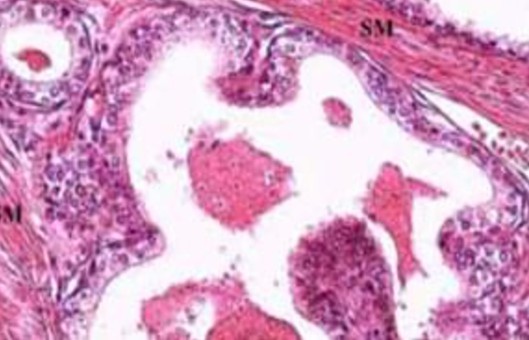Resources
-
Cell Services
- Cell Line Authentication
- Cell Surface Marker Validation Service
-
Cell Line Testing and Assays
- Toxicology Assay
- Drug-Resistant Cell Models
- Cell Viability Assays
- Cell Proliferation Assays
- Cell Migration Assays
- Soft Agar Colony Formation Assay Service
- SRB Assay
- Cell Apoptosis Assays
- Cell Cycle Assays
- Cell Angiogenesis Assays
- DNA/RNA Extraction
- Custom Cell & Tissue Lysate Service
- Cellular Phosphorylation Assays
- Stability Testing
- Sterility Testing
- Endotoxin Detection and Removal
- Phagocytosis Assays
- Cell-Based Screening and Profiling Services
- 3D-Based Services
- Custom Cell Services
- Cell-based LNP Evaluation
-
Stem Cell Research
- iPSC Generation
- iPSC Characterization
-
iPSC Differentiation
- Neural Stem Cells Differentiation Service from iPSC
- Astrocyte Differentiation Service from iPSC
- Retinal Pigment Epithelium (RPE) Differentiation Service from iPSC
- Cardiomyocyte Differentiation Service from iPSC
- T Cell, NK Cell Differentiation Service from iPSC
- Hepatocyte Differentiation Service from iPSC
- Beta Cell Differentiation Service from iPSC
- Brain Organoid Differentiation Service from iPSC
- Cardiac Organoid Differentiation Service from iPSC
- Kidney Organoid Differentiation Service from iPSC
- GABAnergic Neuron Differentiation Service from iPSC
- Undifferentiated iPSC Detection
- iPSC Gene Editing
- iPSC Expanding Service
- MSC Services
- Stem Cell Assay Development and Screening
- Cell Immortalization
-
ISH/FISH Services
- In Situ Hybridization (ISH) & RNAscope Service
- Fluorescent In Situ Hybridization
- FISH Probe Design, Synthesis and Testing Service
-
FISH Applications
- Multicolor FISH (M-FISH) Analysis
- Chromosome Analysis of ES and iPS Cells
- RNA FISH in Plant Service
- Mouse Model and PDX Analysis (FISH)
- Cell Transplantation Analysis (FISH)
- In Situ Detection of CAR-T Cells & Oncolytic Viruses
- CAR-T/CAR-NK Target Assessment Service (ISH)
- ImmunoFISH Analysis (FISH+IHC)
- Splice Variant Analysis (FISH)
- Telomere Length Analysis (Q-FISH)
- Telomere Length Analysis (qPCR assay)
- FISH Analysis of Microorganisms
- Neoplasms FISH Analysis
- CARD-FISH for Environmental Microorganisms (FISH)
- FISH Quality Control Services
- QuantiGene Plex Assay
- Circulating Tumor Cell (CTC) FISH
- mtRNA Analysis (FISH)
- In Situ Detection of Chemokines/Cytokines
- In Situ Detection of Virus
- Transgene Mapping (FISH)
- Transgene Mapping (Locus Amplification & Sequencing)
- Stable Cell Line Genetic Stability Testing
- Genetic Stability Testing (Locus Amplification & Sequencing + ddPCR)
- Clonality Analysis Service (FISH)
- Karyotyping (G-banded) Service
- Animal Chromosome Analysis (G-banded) Service
- I-FISH Service
- AAV Biodistribution Analysis (RNA ISH)
- Molecular Karyotyping (aCGH)
- Droplet Digital PCR (ddPCR) Service
- Digital ISH Image Quantification and Statistical Analysis
- SCE (Sister Chromatid Exchange) Analysis
- Biosample Services
- Histology Services
- Exosome Research Services
- In Vitro DMPK Services
-
In Vivo DMPK Services
- Pharmacokinetic and Toxicokinetic
- PK/PD Biomarker Analysis
- Bioavailability and Bioequivalence
- Bioanalytical Package
- Metabolite Profiling and Identification
- In Vivo Toxicity Study
- Mass Balance, Excretion and Expired Air Collection
- Administration Routes and Biofluid Sampling
- Quantitative Tissue Distribution
- Target Tissue Exposure
- In Vivo Blood-Brain-Barrier Assay
- Drug Toxicity Services
IHC Protocol for Mouse Tissue Sections
GUIDELINE
Immunohistochemistry is the study of localization, characterization and quantification of antigens (peptides and proteins) in tissue cells by applying the basic principle of immunology antigen-antibody reaction, i.e., the principle of specific binding of antigens and antibodies, through chemical reactions to develop color of chromogenic agents (fluorescein, enzymes, metal ions, isotopes) that label antibodies, called immunohistochemistry techniques.
METHODS
- Paraffin slices were baked overnight in a 60°C oven.
- Dewax in xylene, gradient alcohol into water (anhydrous ethanol, 95% alcohol) and soak in distilled water to be used.
- Antigen repair. Take 500 ml of EDTA antigen repair working solution in a 1000 ml beaker and heat it on a low power electric stove until it seems to boil slightly (to prevent desquamation). Place the tissue sections slowly into the beaker. Continue heating, keeping the liquid at a slight boil for 20 minutes. Remove the beaker from the heat and remove the slices after natural cooling at room temperature, wash once with distilled water for 3 minutes and twice with TBS for 3 minutes each.
- Add one drop or 50 μL of 3% hydrogen peroxide solution to each section and incubate for 10 min at room temperature to block the endogenous peroxidase activity. Rinse 3 times with TBS for 3 min each time.

- Remove the TBS solution, add one drop or 50ul of primary antibody (multiple antibodies obtained from inactivated PLB immunized mice, diluted 1:3000), and incubate the negative control with normal serum for 2 hours at room temperature, or overnight at 4°C.
- Wash 3 times with TBS for 5 min each time, remove the TBS solution, add one drop or 50 μL of polymer enhancer (Reagent A) to each section, incubate for 20 min at room temperature, rinse 3 times with TBS for 3 min each time.
- Remove the TBS solution, add one drop or 50 μL of peroxidase-labeled anti-mouse/rabbit polymer (Reagent B) to each section, incubate for 30 min at room temperature, and rinse three times with TBS for 3 min each time.
- Remove TBS solution, add one drop or 50ul of freshly prepared DAB to each section and develop color for 3-10 min.
- Rinse with tap water, hematoxylin re-staining for 10min, rinse with water. 0.1% hydrochloric acid fractionation, rinse with tap water, return to blue with TBS.
- Without dehydration, directly seal the film with neutral resin.
NOTES
Antigen repair must be performed in such a way that the section can always be immersed in the liquid and must wait for the working solution to cool before removing the section.
RELATED PRODUCTS & SERVICES
For research use only. Not for any other purpose.




